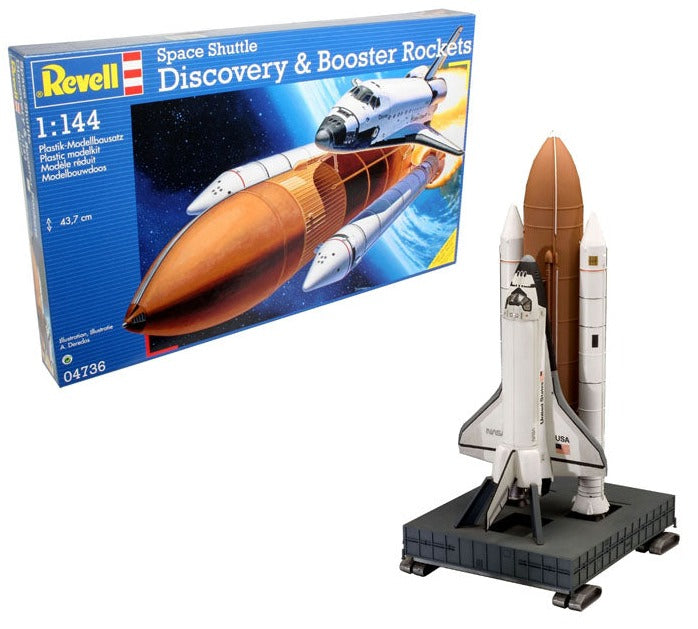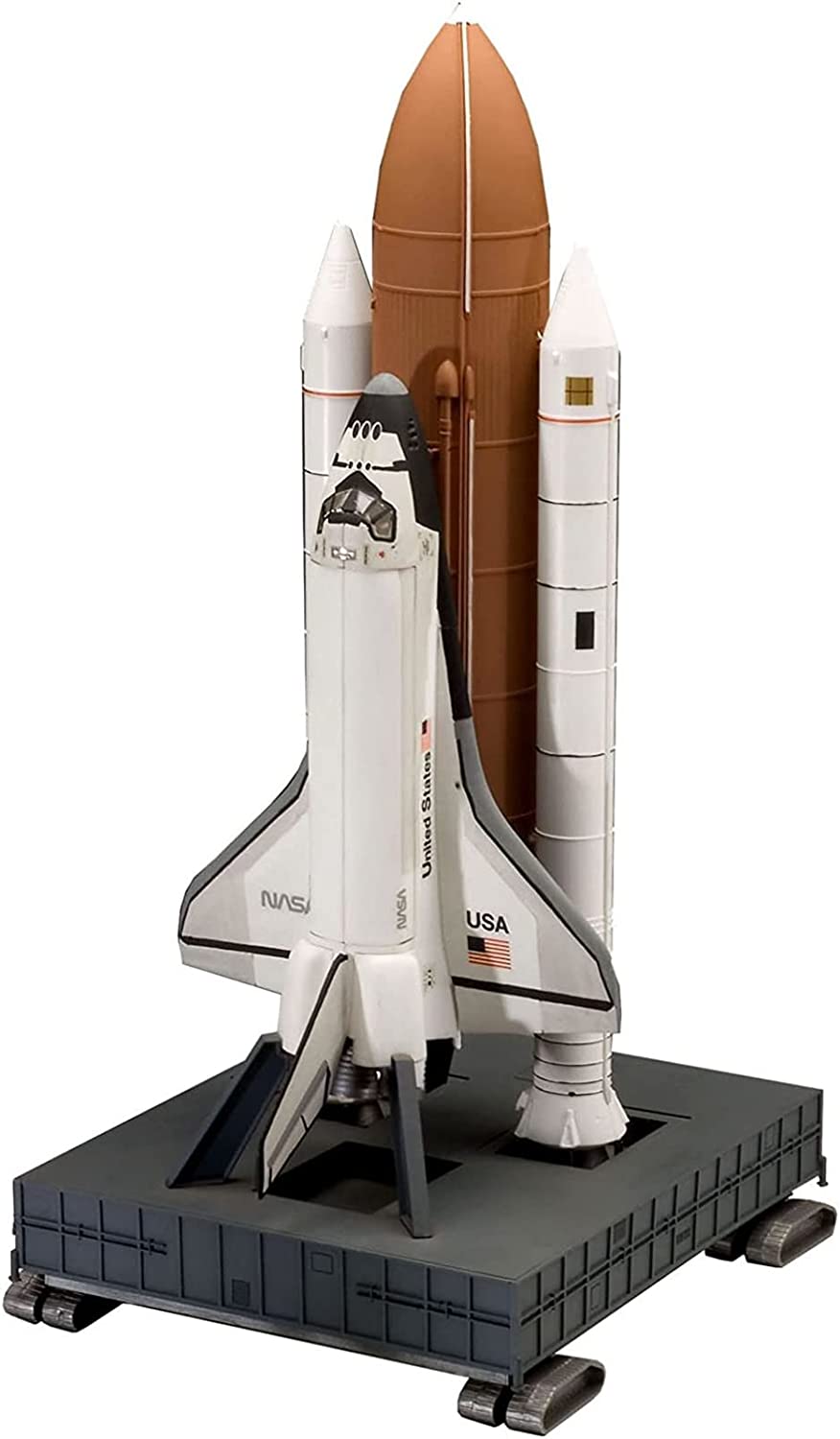Revell 04736 Space Shuttle Discovery + Booster Rockets (1:144 Scale) Model Kit


Product Details
| SKU | REV-04736 |
|---|---|
| Vendor | Revell |
| Categories | Best selling products In stock Items Model Kits New products Other Other Hobby Revell Space & Film Kits |
| Scale | 1:144 Scale |
| Share | |
| Features |
Product Description
The Space Shuttle Discovery & Booster model kit in 1:144 scale is a detailed and sophisticated set for all model building enthusiasts aged 12 and over. With 97 individual parts, the kit offers everything you need to faithfully recreate the famous space vehicle. The set is suitable for experienced modelers and is rated as Level 4, meaning it requires some time and skill to put the model together.
With a height of 437 mm, the finished model will be an impressive collector's item and will allow you to experience the fascination of space travel up close. The model kit contains a variety of realistic features, including opening cargo doors, a movable transport arm, an external fuel tank with two solid rocket rockets, a mobile launch pad and three detailed rocket engine final stages. All parts are made of high quality plastic and fit together easily to create a sturdy and durable model.
With this model kit you can experience the fascination of space travel up close and create an impressive collector's item for your showcase. So get started and immerse yourself in the world of space travel and model building!
About the original:
The development of a transport system for NASA that was reusable in its main components began in 1972 at North American Rockwell and a number of other companies. The total weight of the Space Shuttle ready for launch is 2,055 t. It can carry a payload of 30 t into an orbit up to 965 km above Earth. The orbiter prototype, the Enterprise, was completed in 1976. The Enterprise was used to research the flight and landing characteristics in the atmosphere and in the development of the space-capable ferry.
The first launch of a space shuttle into space took place on April 12, 1981 with the space shuttle Columbia. With the completion of additional orbiters from 1983 onwards, NASA significantly intensified its scientific, experimental and military strategic activities together with the US Air Force. Communications and research satellites were transported into space, repairs were carried out on site and the American space station was built and supplied. The Challenger was in space for the first time on April 4, 1983. Discovery took off for the first time on August 30, 1984. Since October 3, 1985, the fourth space shuttle Atlantis has been in use on 26 missions. The Endeavor made its first launch on May 7, 1992.
This ferry was equipped with numerous new devices and computers, making it more powerful overall. The orbiters can remain in space for a maximum of 28 days. The enormous structural and thermal loads during takeoff and landing require constant checks and maintenance of all components as well as improvements to the equipment. The heat shield on the front and bottom of the space shuttle is particularly affected and must be constantly monitored and repaired. The Challenger was lost in 1986 and the Columbia in 2003 due to two tragic accidents in which the entire crew died.
After a two-year hiatus and extensive modifications to the orbiters and main tank, flights resumed. With its landing at Edwards Air Force Base in California on August 9, 2005, the 31st flight of Discovery and thus NASA's 114th space shuttle mission was successfully completed. With the resumption of shuttle flights, the expansion of the International Space Station (ISS) will continue over the next few years. This should also include the European space laboratory Columbus.
- Openable cargo compartment doors
- Movable transport arm
- External fuel tank with two solid fuel rockets
- Mobile launch pad
- Three detailed rocket engine final stages
Decals:
- Orbiters "Enterprise", "Discovery", "Atlantis", "Endeavour" before 1998
- Orbiters "Enterprise", "Discovery", "Atlantis", "Endeavour" after 1998
Scope of delivery:
Kit including construction instructions and decals

